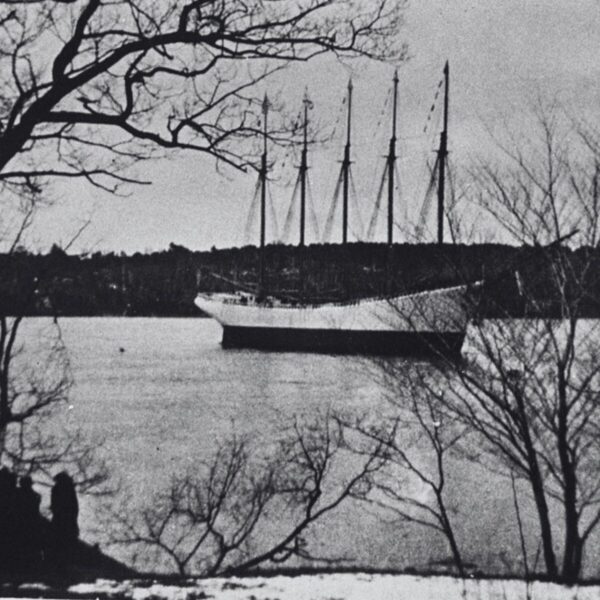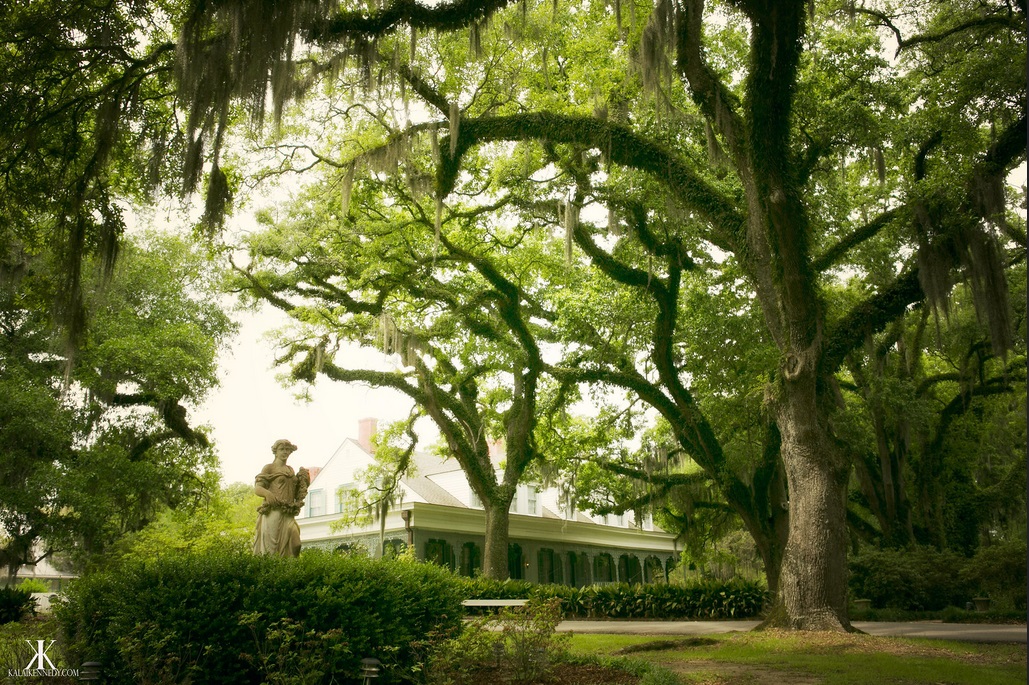Lady In Red: Who Buried Her in the Odd Glass Coffin?
In the Odd Fellows Cemetery of Lexington, Mississippi lies a small unassuming grave marker. Lady in Red Found on Egypt Plantation it reads. Who was the Lady in Red and where did she come from?
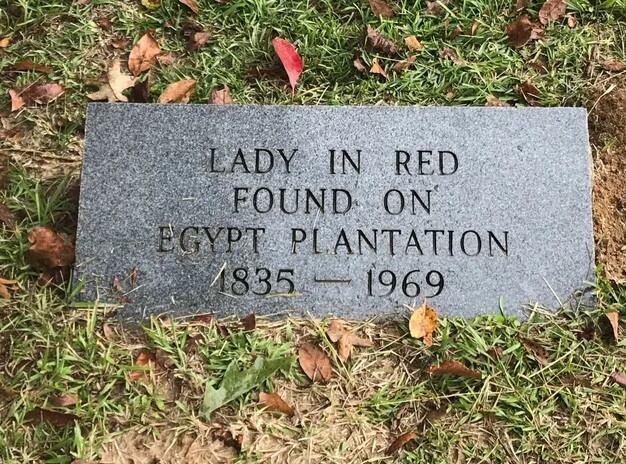
- The Discovery of the Lady in Red
- Rapid Deterioration
- Investigation Begins
- Fisk Airtight Coffin
- The Town’s Fascination
- The Yazoo River
- Tracing History
- Skepticism Abounds
- Lady in Red’s Legacy
- The Independent Order of the Odd Fellows
- The Strange Rituals of the Odd Fellows
- Skeletons in the Closet
- Where were these skeletons from?
The Discovery of the Lady in Red
On the cool morning of Thursday, April 24th, 1969, in the small town of Cruger, Mississippi, farm workers were digging in an unused vegetable garden to place new septic lines. This work was taking place on the grounds of the former Egypt plantation.
Approximately 3-4 feet below the surface, the backhoe they were using hit something solid. What the men hit turned out to be a casket. An unusual-looking steel and glass casket. The backhoe had broken the glass top, and a strange liquid was now pouring from the hole into the earth.
The men called Carl Wilson, the Holmes County sheriff. Wilson opened the casket. Inside was the body of a young white woman, “miraculously preserved.” She was wearing a red velvet brocade dress; her long auburn hair and pale skin looked as if she’d just taken her last breaths. Her hands were crossed at her chest, and she was wearing white gloves. She wore a long cape and silk boots with buckles on her feet. Estimates put her age somewhere in her late teens to early 30s.

Rapid Deterioration
Once the glass was broken, the young woman’s remains deteriorated rapidly. Her once beautiful red dress was reduced to shreds. A man named Bob Hardeman was working close by the day she was found. “I was in the field. I called the sheriff. I got there within 30 minutes, I’d say. The body had not deteriorated; there was no odor. I ate lunch, rested, the sheriff came. Back out there, the body had deteriorated greatly in the hour and a half. She’d turned black, and the odor was awful.”1 Greenwood Commonwealth April 2, 1995
The strange liquid turned out to be alcohol. Alcohol was utilized to preserve decaying corpses in the early 19th century. Additionally, it was occasionally employed as a preventative measure to stop bacteria or diseases from infecting living people.

Investigation Begins
The young woman was reburied in the place where she was found. Locals began calling her the Lady in Red because of her red dress. The sheriff began asking around town, trying to find out if anyone knew this young woman or why she might be buried there. According to contemporaneous reports, the site was owned by the Womack family in 1835 and cleared in 1836. The land was on the site of the former Egypt plantation and was part of a 2,000-acre tract. The former plantation home and outbuildings were no longer standing by the time the lady in red was found.
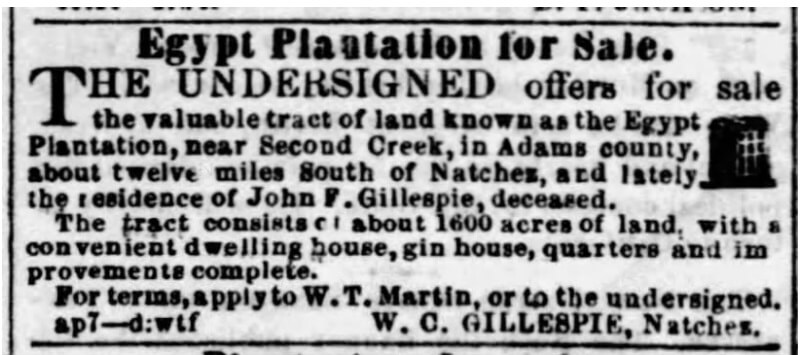
As far as anyone in 1969 knew, that particular section of land had never been used as a burial site. The vegetable garden she was found in was adjacent to the Thomas family home. The Thomas family purchased the land in 1919 and were the owners when the young woman was found. J.T. Thomas told reporters that the young woman would have had to have been in the ground for at least 75 years and was from a “well-to-do” family because of the expensive casket.
The casket was all steel with a glass window at the top so that the deceased’s face could be seen. The young woman fit the casket perfectly, so it seemed to be made especially for her body.
Fisk Airtight Coffin
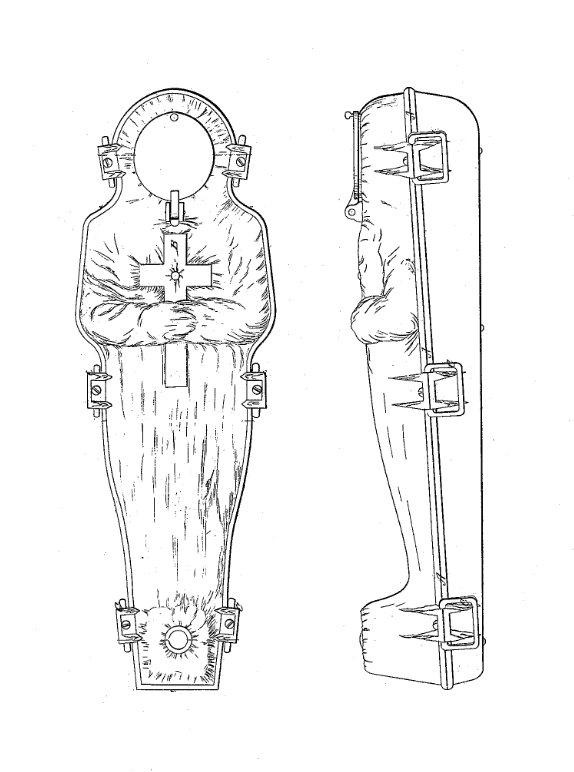
It was a ”Fisk Airtight Coffin of Cast” made by the Fisk Company out of Rhode Island. Their caskets resemble the Egyptian sarcophagus because of their sculpted arms. The glass window plate allowed for viewing of the deceased without the risk of exposure to pathogens. The caskets were airtight, which allowed the bodies of deceased persons who died far from home to be shipped back to their families and still be viewed during their funeral. As for the lady in red, her casket was filled to the top with alcohol after her body was placed inside. The alcohol is responsible for her remarkably preserved remains, several decades after her death.
The Fisk caskets were pretty expensive for the time period. A pine casket would have cost $2.00, while the steel casket cost $100, which is around $3,500 in 2024 dollars. For context, the average coffin today costs anywhere from $3,000 to $8,000. It’s unclear how long the turnaround time was for one of these custom-made caskets.
The Town’s Fascination
The local rumor mill was set ablaze by the discovery. Walter Pitchford, who worked at the Odd Fellows Cemetery, saw the woman’s body. “She was real pretty. Her hair was kind of black-looking and long. She was a young lady.” 2clarion ledger
“I remember when they found her and people were talking about it. It was the talk of the town. It’s just a mystery who she is and where she came from.” – Chris Hammett
The Yazoo River
The Yazoo River, only 100 yards from the burial site, was once a major thoroughfare. It connects the Mississippi delta region to the much larger Mississippi River. Wealthy people traveling down the river in the 19th century primarily used steamboats. These were especially popular as they allowed for more efficient and reliable travel compared to earlier methods.
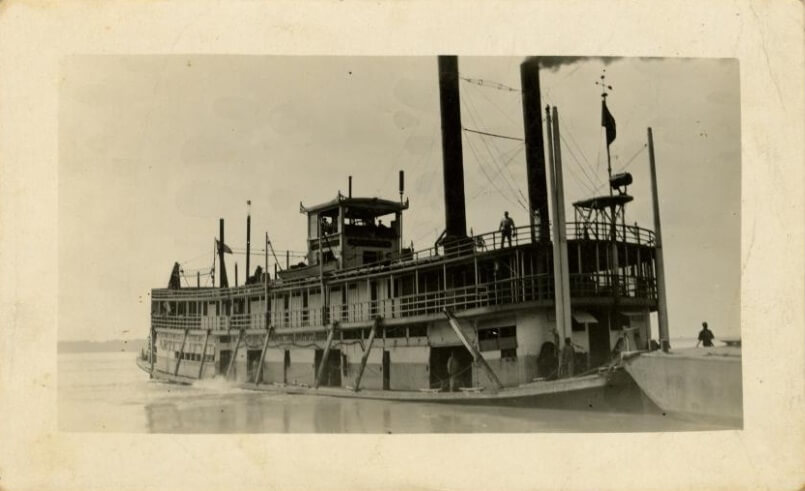
One theory was that the lady in red died while on a steamboat voyage and was buried close to the river by her family members. Another theory is that the young woman had already passed away and her casket was being transported on a ship. It was theorized that her body may have fallen off the boat or been found after a steamboat capsized and was buried by locals, in an act of benevolence. The casket would have had to have been made to fit the young woman’s measurements.This would have taken some time, especially in the 1800s.
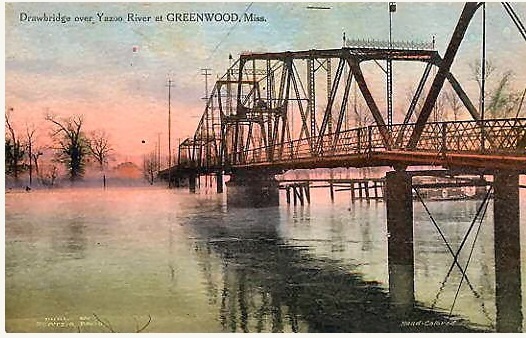
Tracing History
Local historians used the style of the woman’s shoes to trace the approximate time period when she was buried. The shoes were “tiny, low, broad-heeled boots forming a slipper, the fabric of silk going almost to mid-calf.” 38/28/69 greenwood Commonwealth This particular style was popular in the late 1830s and 1840s. It was still popular among aristocratic women in the 1870s-1880s, but by then it had a pointed toe. The lady in red’s shoes were square-toed with buckles. Historians ultimately determined that the lady in red’s death most likely predated the Civil War. The consensus was to put 1835 as her birth year, more than one hundred and thirty years before she was found.

Skepticism Abounds
There are those who are skeptical of the lady in red’s existence. For example, why are there no photos of her casket or her body? Polaroid cameras were introduced in the 1940s and were widely available by the late 60s. It seems unlikely that no one in a small town like Cruger would have had access to one, especially the police.
In later years, people have flocked to the mysterious lady in red’s grave. Visitors bring flowers and mementos. In August 1969, J.T. Thomas, who owned the land the lady in red was buried in, petitioned the court to have her remains moved. She was interred at her final resting place at the Odd Fellows Cemetery in Lexington, Mississippi.
Lady in Red’s Legacy
Egypt plantation’s mysterious lady in red has never been identified. It is unclear if any DNA testing has been done on her remains. Her real identity will most likely never be known. If she really was born in the mid-19th century, her immediate family members would have been long gone when her resting place was discovered.
Even though she may never have her name back, that doesn’t mean she is forgotten. Chris Hammett, who works for the Lexington Odd Fellows Cemetery, brings flowers and prays over the woman’s grave. Hammett told the Clarion Ledger in 2019, “Something has been pulling me to her. She was someone’s child, sister—someone’s pain and grief. She has no one to speak for her. She has no one to pray over her. She has no one to put flowers on her grave. I don’t want her to ever be forgotten again.”
We should all be so lucky to have someone look after us, nearly two centuries after our deaths.
The Independent Order of the Odd Fellows
The Lexington Odd Fellows Cemetery is open to the public. The first person to be interred there was a one-year-old boy named Robert. He died on June 8th, 1843.In the early 1900s, the Independent Order of Odd Fellows (I.O.O.F.) deeded additional land for cemetery use and assumed responsibility for its care. The Odd Fellows Order was a fraternal organization with its roots in 18th-century England. They provided social services and support to their members, especially in an era before widespread government assistance. Some of their services included financial assistance, help with receiving medical care, and providing support to widows and orphans. Their motto was “Friendship, Love, and Truth.”
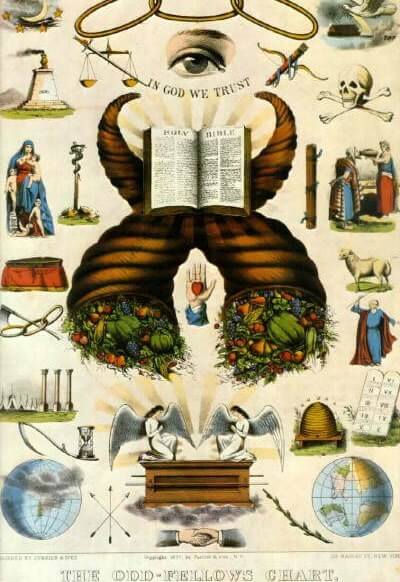
While the Odd Fellows Order is mostly remembered for their charitable acts, similar to other organizations such as the Masons, they had some strange rituals. One of these involved how new members were initiated.
The Strange Rituals of the Odd Fellows
Ainslie Heilich, a spokesperson for the Sovereign Grand Lodge for the Independent Order of Odd Fellows spoke of the initiation ritual to Mental Floss in 2022.
“When a prospective Odd Fellow was ready to join the ranks of the society, their initiation would involve donning a hoodwink—goggles with built-in blinds that could be open and shut. Sometimes weighed down with chains, the would-be member would be led into a torch-lit or candlelit room. When the blinds were opened, they would find themselves suddenly and unexpectedly standing face-to-face with a skeleton.
The practice, known as the Lodge of Reflection, is intended to remind members of their own mortality—that no matter a person’s wealth or stature, all wind up the same in the end.
The skeleton serves as a ritual and symbolic ‘memento mori’4Latin phrase meaning, “Remember you must die.” where we all face mortality by looking the inevitable great equalizer in the eye.”
Skeletons in the Closet
After interest and membership in these organizations waned, the buildings were sold and renovated. During cleanings or extensive renovations, skeletons were found hidden in walls, cupboards, and beneath floorboards.
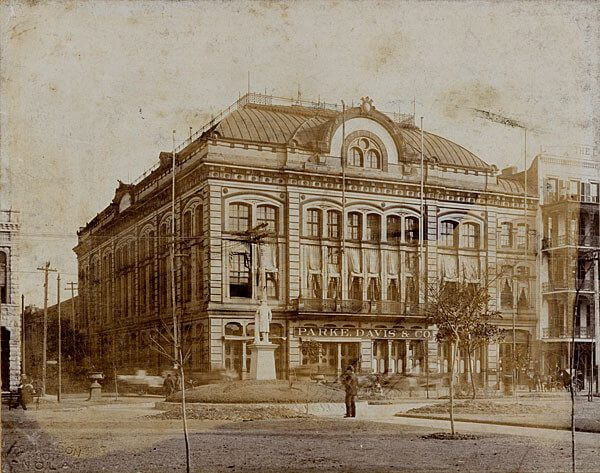
In 1976, in St. Clair, Pennsylvania, while crews were renovating a former Odd Fellows lodge, they made an unexpected discovery. As they worked, they uncovered a mahogany coffin hidden beneath a false floor in a second-floor closet. Upon opening it, they found something truly bizarre: an articulated human skeleton, with its jaw and fingers wired in such a way that they could move. The coffin was marked with the I.O.O.F. insignia.
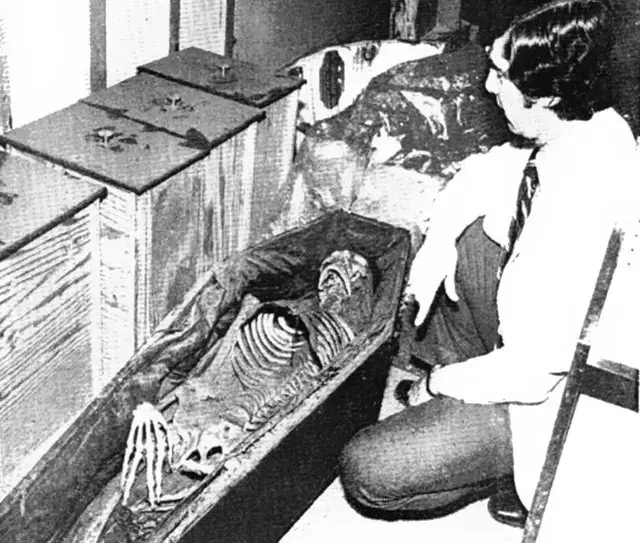
In 2001, an electrician named Paul Wallace was working on a former I.O.O.F. lodge in Warrenton, Virginia, when he discovered a tiny door to a dark recess between two walls. Behind the door was a black wooden box. When he pulled the box out to see what was inside it, he was shocked to find a skeleton. He stood and stared at the skeleton for a good 20 minutes before returning it to its hiding place. When police were notified, they sent the bones off to a lab to be identified.
Bones, partial and full skeletons, have been found at former Odd Fellows lodges across the country. A group of Missouri cheerleaders found two fake skeletons and one suspiciously realistic one inside three coffins. The cheerleaders had just rented a former Odd Fellows lodge to use for practice. Several moldy bones were found inside a child-sized coffin in Oregon. In Idaho, during renovations of another former lodge, a skeleton was found in a drawer in a built-in wardrobe.
Where were these skeletons from?
The skeletons likely were purchased from scientific or fraternal supply companies. One catalog from the early 1900s advertised a “genuine, full-size selected specimen, set up and wired, fairly deodorized.” 5https://www.latimes.com/archives/la-xpm-2001-apr-01-mn-45210-story However, some were purported to be caked with dirt, causing some to speculate that the skeletons had been buried and subsequently dug up. Modern-day Odd Fellows members scoff at being called grave robbers and insist each skeleton was purchased from a “legitimate” dealer.
Sources:
James, Susie. “Lady In Red: Body Found on Egypt Plantation Still a Mystery.” The Greenwood Commonwealth. 2, April 1995.
Biggers, Jane. “Lady in Red Laid to Rest in Lexington.” The Greenwood Commonwealth. 28, August 1969.
Mississippi Folklore: Lady in Red
“Mystery Casket Found on Egypt Plantation.” The Greenwood Commonwelath. 26, April 1999.
Jacobsen, Molly McBride. “Grave of the Lady in Red.” Atlas Obscura. 17, October 2016.
Purser, Travis. “Skeleton in a Drawer: A Bellvue Mystery.” Mountain Express. 27 October 1999.
Lexington Mississippi Odd Fellows Cemetery
Rossen, Jake. “The Secret Society That Left a Trail of Human Skeletons in its Wake.” Mental Floss. 2022, July 18.
Plymouth Odd Fellows: IOOF Symbols
- 1Greenwood Commonwealth April 2, 1995
- 2clarion ledger
- 38/28/69 greenwood Commonwealth
- 4Latin phrase meaning, “Remember you must die.”
- 5https://www.latimes.com/archives/la-xpm-2001-apr-01-mn-45210-story
Featured Image Art is “Portrait of a Young Lady” by Eduard Friedrich Leybold, 1824. It is in the public domain.
